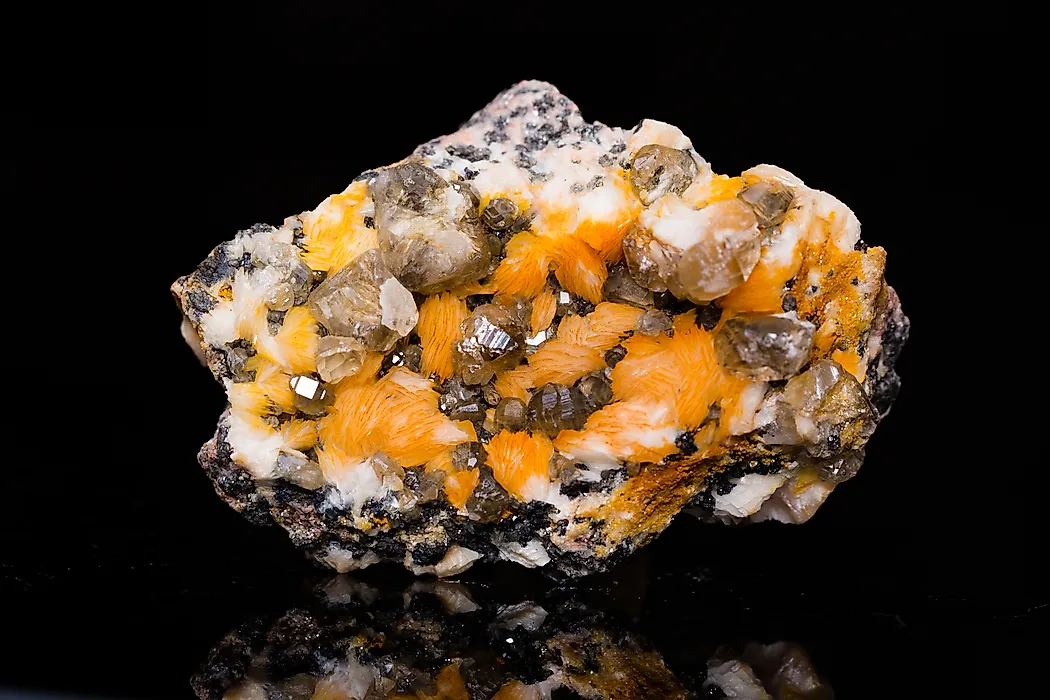What is Barite?

5. Description
Barite was named after the Greek word “Barys” meaning “heavy”. This heavy nature can be explained by its exceptionally Specific Gravity of 4.5, a number that’s very high for a nonmetallic mineral. The chemical composition of this sedimentary rock is mostly made up by Barium Sulfate. Barite is a mineral that comes in a variety of colors, the range including white, yellowish-white, grayish-white, brown, and dark brown alike. It’s generally found in an uneven, prismatic state, which is formed by crystals and finely grained fibres. Barite will leave a white streak yet it has a vitreous or glassy luster. Though it may be hard and heavy, one can forget using this mineral for strength, however. In fact, Barite has a tendency to be brittle and break easily.
4. Location
Barite is found in many regions around the world, but the majority of large Barite deposits are found within the populous Asian nations of China and India. Brazil, Canada, Iran, Ireland, Morocco, Mexico, The United States, and Liberia have also been known to be major producers of the mineral, despite falling well behind the two leaders in the East. Some of the most massive Barite-containing crystals have been found in the Chinese Mountains, as well as meaning more being frequent in hot springs from all around the world. Barite is also commonly found in conjunction with other minerals, especially Anglesite and Celestine. The largest commercial Barite mines can be found in China and the United States, namely the states of Colorado and California within the latter.
3. Formation
In order to for Barite to be formed, its constituent elements must first go through a rigorous series of processes. These include Biogeochemical cycles, hydrothermal heating and pressurization, and subsequent evaporation of minerals' inner moisture, just to name a few. Like those forming most minerals, such processes take very long times in relation to human perspectives. This mineral is commonly found in hot spring deposits, as well as in the lead-zinc veins in limestone, and interspersed amongst certain hematite ores.
2. Uses
Humans use Barite in a variety of fields, ranging from construction to medical equipment. Therefore, Barite has become an essential ingredient in modern life. It’s used in petrochemical extraction as a weighting agent in drilling muds. With its various colors, it is also often made into pigments for paints, as well as a weight filler for paper and rubber. X-ray technicians use Barite as a shielding agent, and one that is safer than lead, in order to protect certain body parts from gamma and x-ray emissions during medical imaging procedures and treaments involving radiation.
1. Production
China is the leading producer of Barite, producing roughly 4,100 thousand metric tons annually, according to the 2011 Barite Production Poll. India took second place, with 1350 thousand metric tons annually, then came the United States with 710 thousand metric tons, followed by Morocco with 600 thousand metric tons. For drilling mud Barite, one metric ton sells for $150 straight from the mine. The United States takes the cake for being the leading consumer of Barite, at around 3.4 million tons per year, with China using 1.45 million tons per year coming in at as a distant second. Barite is an essential mineral in many daily elements of our lives, as it assists us in housing, oil extraction, and in our medical fields, all the while creating jobs and boosting the economy all around. Needless to say, Barite's place in human civilization is likely here to stay for many years to come.











